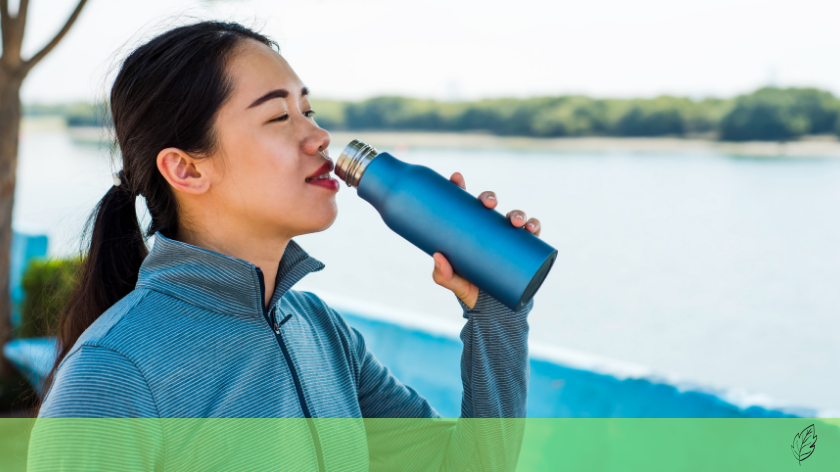We want to increase our footprints on the treadmill, not on the planet. There are some easy swaps you’ve probably already seen to reduce waste in your workouts: Get a reusable water bottle instead of disposable plastic ones, opt for a washable towel instead of paper ones, or take public transit or walk to the gym when possible. If you’re looking to take the next step, here are some other ideas to help trim your waste as you trim your waist!
- Many people supplement their nutrition with things like protein powder and vitamins. While buying your own supplements is a great choice over buying individually wrapped foods and premixed drinks, there’s more to do. Can you buy your supplements in bulk? You’ll save some money in the long run, but you’ll also use less packaging per serving. Love the convenience of single-serving packets of protein powder or vitamin combos? It’s easy to make your own from a bulk container, and you get extra points if you use a reusable bag!
- Part of reducing your impact is about reducing the amount you buy and reusing things you already have. Do you need to replace that activewear with a snag in it, or can you patch it? Do you need a new water bottle, or is there an old bottle in the back of the cabinet? Do you need a new piece of equipment at home or is there something you can adapt that you already own? You probably have something easily available that you can make work. Don’t forget about second-hand items too!
- What do you wear to the gym? Synthetic fabrics are used in the majority of our clothes today, and they’re especially common in workout gear. They do a great job wicking sweat and supporting performance, but they also can cause problems. Synthetic fabrics shed tiny fibers when washed, and even with water treatment and filtering, they find their way into the oceans as microplastic waste. It’s difficult to get precise numbers, but the International Union for Conservation of Nature estimated that 35% of microplastic in the ocean comes from synthetic fabrics [1]. These tiny plastics add up over time and disrupt the health of animals, plants and the environment. Consider ways to cut down on these microplastic fibers: Use a wash bag created to filter out fibers, wash clothes less often and in full loads, and invest in natural fabrics when possible.
There are lots of small changes you can make in your own routine, but it’s important to remember that the biggest difference for the planet will come when larger organizations can make better choices. You can use your voice to help those changes! Can you petition a local race to make their finisher medals optional, or have water stations set up for reusable bottles rather than disposable cups? Can you encourage your gym to switch to spray disinfectant instead of single use antibacterial wipes? Think outside the box and use the power of demand to help move larger groups in the right direction!
Shelby Mongan is a Training Specialist for Vitality Group. After leaving academia, she found a purpose for her passion and skills in making people healthier and enhancing and protecting lives. She is a devoted plant mom, a newly obsessed powerlifter, and considers herself a nerd with an outdoorsy streak.
[1] https://portals.iucn.org/library/sites/library/files/documents/2017-002.pdf







